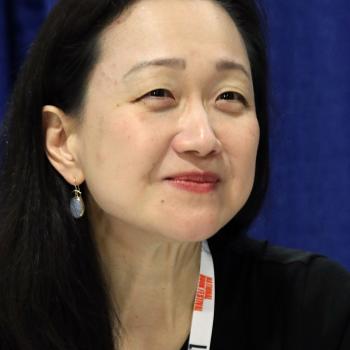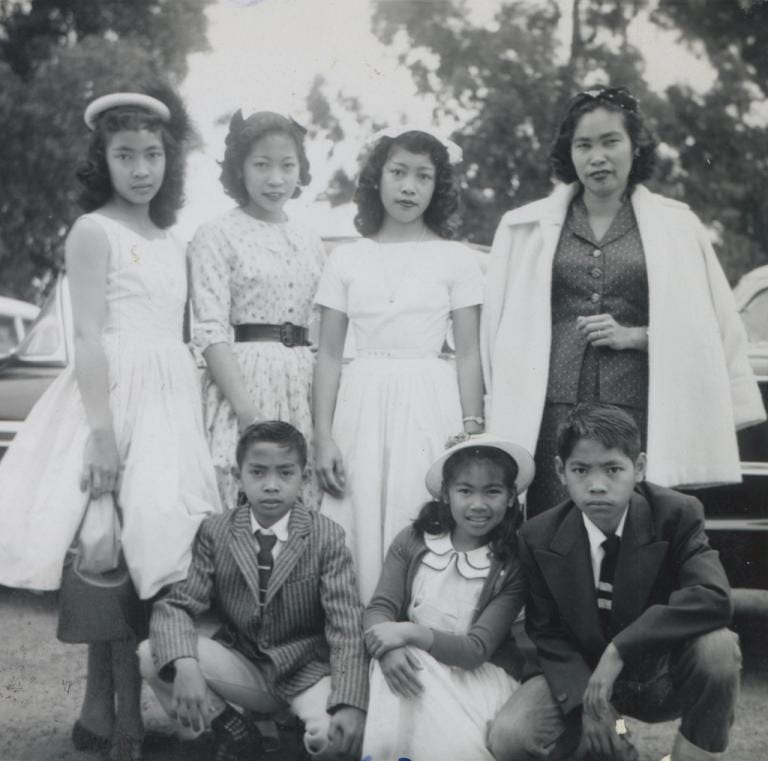
A few years ago, Saturday Night Live aired a sketch that poked fun at the colorful cast of characters who commonly appear at a church service: the nervous organist who botches the opening chords of every hymn, the choir soloist who is a little too extra, the overzealous lector who does the reading with the dramatic flourishes of a first-time competitor in a high school forensics tournament. But my favorite part of the sketch came toward the end, when the camera zeroed in on the people in the back of the church. “And who’s that over there?” the announcer said. “It’s rows and rows of little Filipino ladies you’ve never seen before! But they must live nearby because this is their church!”
Like so many clever SNL sketches, the joke was funny because it was true. That pew full of Filipino church ladies: I know those ladies. They are my mama and my Lola. They are my cousins and my aunties. These women go to church like it’s their job. And given the changing demographics of American Christianity—the fact that it’s undergoing a process of “de-Europeanization”—I think it’s fair to say that, yes, it is their church, and with the continued growth of the Filipino American population, it’s becoming more so.
But the sketch’s portrayal of Filipino Americans as faithful churchgoers doesn’t tell the whole story. While some people might not have noticed them before, those Filipino churchgoers have actually been there for a long time—over a century. And though they might appear to be the quietest participants in the church service, a look at the history of Filipino American Christians reveals that when it comes to matters of injustice, they’ve been actually quite vocal. Too often, Filipino American Christians have been seen as pious churchgoers who embody a religious version of the “model minority” stereotype: dutiful and docile, obedient and unwilling to make waves. In fact, to use the words of the historian James Zarsadiaz, Filipino American Christians have a long history of “raising hell” as faithful advocates of justice and freedom.
October is Filipino American History Month, a perfect occasion to highlight an important and overlooked aspect of Filipino American history: that deep religious faith has long animated Filipino Americans’ political activism. Most students of Asian American history know that Filipino Americans have a long history of championing the rights of workers and immigrants and protesting against racism, discrimination, and oppression, both in the United States and in the Philippines. Less well known, though, are the religious dimensions of this history. Christian beliefs, practices, identities, and institutions have been central to how Filipino Americans have engaged in politics and worked to build a world that is more compassionate, free, equitable, and just.
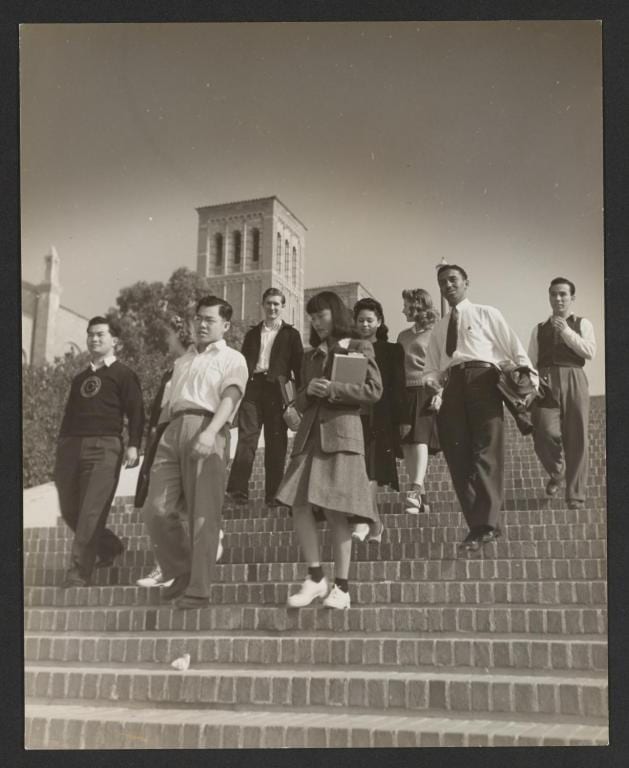
Fighting for “Christian Citizenship” and Labor Rights
Take, for example, the importance of religion in the civil rights activism of Filipino students in the early twentieth century. As the historian Stephanie Hinnershitz argued in her book Race, Religion, and Civil Rights (Rutgers University Press, 2015), many Asian migrants who arrived in the United States during this period were students from China, Japan, and the Philippines. These Asian students formed the largest population of foreign students on West Coast college campuses. Having encountered Christian missions in their home countries, these students also tended to identify as Christian—especially Baptist, Presbyterian, and Methodist— and came to America with ties to non-denominational Christian organizations such as the Young Men’s Christian Association (YMCA).
Once in the United States, Asian students seeking fellowship with people of the same cultural and religious background formed their own organizations, such as the Filipino Students Christian Movement (FSCM), the Japanese Students’ Christian Association in North America (JSCA), and the Chinese Students’ Christian Association in North America (CSCA). These organizations served the needs of specific ethnic groups, and they also worked in collaboration with one another. Ultimately, these Asian Christian associations facilitated a new racial consciousness, and they were at the center of a surge in interethnic activism to address the problem of anti-Asian racism both on and off campus. As Hinnershitz argued, the ties among these Asian Christian students were important not just to foreign-born Asian students contending with discrimination, but had an impact on future generations of Asian Americans fighting for rights and racial justice. “[T]he Christian networks contributed to and shaped a growing West Coast civil rights movement through the interwar years and into the post-World War II era,” Hinnershitz wrote.
Filipino students, like their Japanese and Christian counterparts, drew directly on the core tenets of their faith to contest the racism and discrimination they experienced in the United States. In their arguments for equal treatment and civil rights, they argued that racism and unfair treatment contravened the teachings of Christianity. As Hinnershitz wrote,
[T]hese students argued in their bulletins, meetings, and larger conferences that no nation or group of rulers had the power to limit basic human rights that extended to all. There existed inalienable rights that God guaranteed to citizens of a Christian universe. This ‘Christian citizenship,’ or political identity grounded in religion, rested on respect, friendship, and peaceful relations regardless of race or immigration status. In turn, the members and leaders of the Christian student associations connected the struggle for racial equality in the United States to a global struggle against oppression caused by unchristian ‘isms’ such as imperialism, nationalism, and racism.
To this end, Filipino, Japanese, and Chinese students used their shared Christian identity to unify their diverse members and advocate for a range of measures that advanced their vision of “Christian citizenship” and civil rights. They believed that a commitment to “Christian citizenship” called them to address racism and prejudice at their home universities, protest discriminatory immigration laws in the United States, and address global problems such as nationalism and imperialism. Writings by student leaders reveal how they connected this justice work to their religious beliefs. For example, the Filipino Student Bulletin, a publication that featured writing by many members of the FSCM, urged that the United States’ colonization of the Philippines revealed “evidence of aggressive nationalism and a lack of respect for God’s authority over humanity.”
Filipino Christian students also played a central role in struggles for justice beyond college campuses, especially in the famous Filipino labor activism of the early twentieth century. During the summer, Filipino students often earned money by working in agriculture, fisheries, and canneries along the West Coast. Outraged by the unfair and unsafe conditions endured by Filipino laborers, Filipino student-workers, many of whom were members of the FSCM, joined the Cannery Workers’ and Farm Laborers’ Union (CWFLU). This storied Seattle-based labor union, known for its role in early battles for racial equality and labor rights, often had Christian student-workers at its helm—people like Trinidad Rojo and Irineo Cabatit, who participated in the FSCM and who later led the CWFLU and helped to transform it into a leading civil rights organization. Importantly, Christian students like Rojo and Cabatit were well-positioned to lead the CWFLU because they had gained valuable experience as activists with the FSCM, and their background in organizing Asian Christian students informed their work with the CWFLU. As Hinnershitz wrote, Rojo, Cabatit, and other FSCM members were “[c]oming from an organization devoted to building fellowship, ending prejudice, and promoting pan ethnic and interracial cooperation,” and their work with the CWFLU reflected these goals.
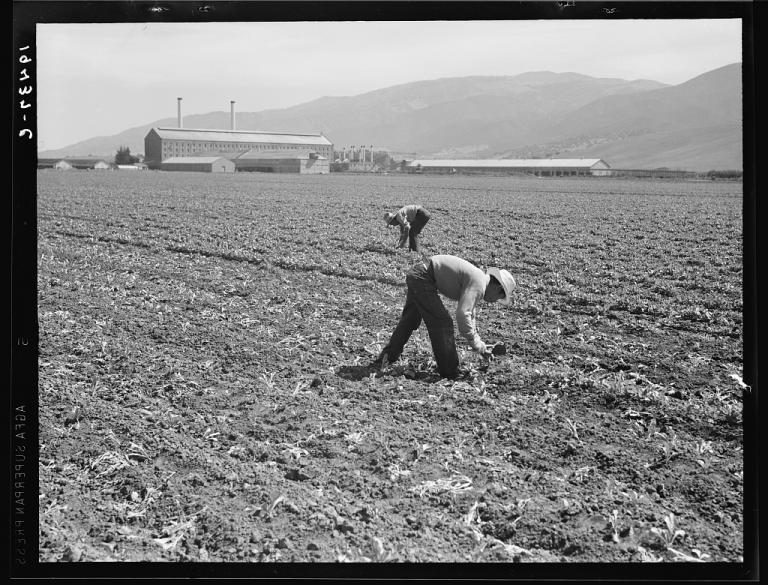
Resisting Martial Law and Political Repression
Religion also shaped the political activism of Filipino Americans later in the twentieth century, when Filipinos on both sides of the Pacific were involved in a transnational movement to resist martial law and end the dictatorship of President Ferdinand Marcos. Here, too, Christian individuals and institutions were central, if often overlooked, participants in Filipino American collective action during the 1970s and 1980s. The anti-Marcos movement in Chicago offers a useful case in point. As Zarsadiaz argued, in that city, organizing against martial law leaned heavily on the leadership of Filipino American Methodists.
Most Filipino immigrants were Catholic, but the United Methodist Church of Illinois pursued energetic outreach to Filipino immigrants during the late twentieth century, with justice issues at the center of their message. The United Methodist Church of Illinois hosted rallies and teach-ins to educate their community about imperialism, militarism, and human rights abuses in Asia, which the church connected to the problems of racism in the Untied States. In appealing to Filipino immigrants, they directly addressed the issue of political repression under the Marco dictatorship, using what Zarsadiaz described as “discourses of spiritual revivalism.” While Filipino American Methodists in Illinois remained modest in number, they nonetheless gained significant political influence and served in leadership positions in local campaigns against martial law. They drew explicit connections between Christian teachings and anti-martial law activism in order to draw non-Filipino people into the movement. They also allied with leftist groups in a variety of high-profile projects—for example, organizing a 1981 visit from Ninoy Aquino, a leading Marcos critic whose assassination later intensified the anti-martial law movement.
The work of Rev. Leo Constantino, a minister who worked on Chicago’s South Side, illustrates the importance of Filipino American Methodists in anti-martial activism. Constantino migrated to the United States to pursue his doctorate at the University of Chicago Divinity School in 1961, and rather than returning to the Philippines after concluding his studies, he chose to stay in Chicago. However, even though he lived in America, he remained committed to addressing a wide range of justice issues in the Philippines, including poverty and political freedom. By the 1980s, Constantino was at the forefront of a broader Methodist effort to end the political repression of the Marcos dictatorship. He helped coordinate the logistics for Aquino’s visit, served as a critical node in a transnational network of progressive activists, and urged fellow church leaders to support the movement. Most of all, as a minister, Constantino did what he was trained to do: he preached. In his passionate sermons, he compared Marcos to a fascist dictator and detailed the human rights violations and political repression under his rule. In doing so, he never lost sight of his focus on the religious roots of his resistance. As Zarsadiaz noted, Constantino “explained to congregations why the anti-martial law campaign was not about politics but was, from his standpoint as a Methodist, a moral and religious obligation.”
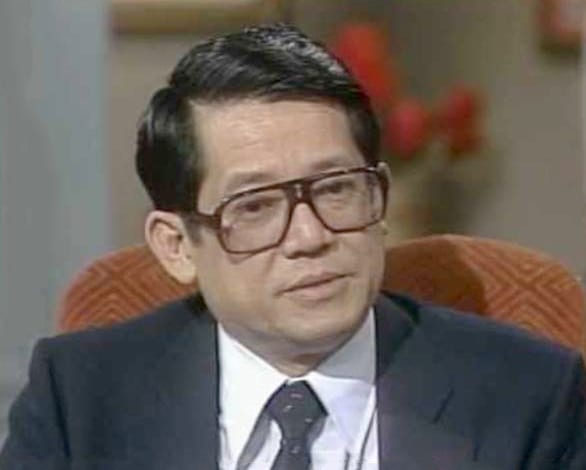
When the People Power movement eventually succeeded in removing Marcos from office, Constantino emphasized that it was “the Filipino people [who] brought the Marcos house down.” This observation was true, but it’s worth interrogating the forces that compelled Filipino people to take action in the first place. A look at Filipino American activism throughout history reveals that we can’t tell a story about Filipino American justice work without paying attention to religion. Religious communities, commitments, and convictions have played a critical role in shaping how Filipino Americans have labored to create a more just and equitable world.
Nor can we tell a story of Filipino American faith without paying attention to its intersection with justice movements. We see this not only in our past, but also in our present, especially when we consider how Filipino Americans today are advocating for racial justice, environmental justice, and immigration justice. Too often, casual observers of Filipino American religious life make the assumption that the Filipino church ladies in the back of the church are pious, apolitical, and conservative. Yes, it might be appropriate to apply some or all of those words to a segment of the Filipino American Christian community. But it’s certainly not the whole story, and that limited narrative is neither truthful nor faithful to the rich tradition of Filipino American Christian activism in the United States.



